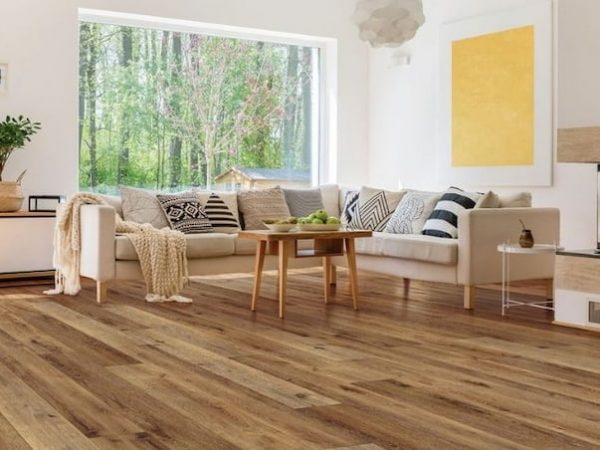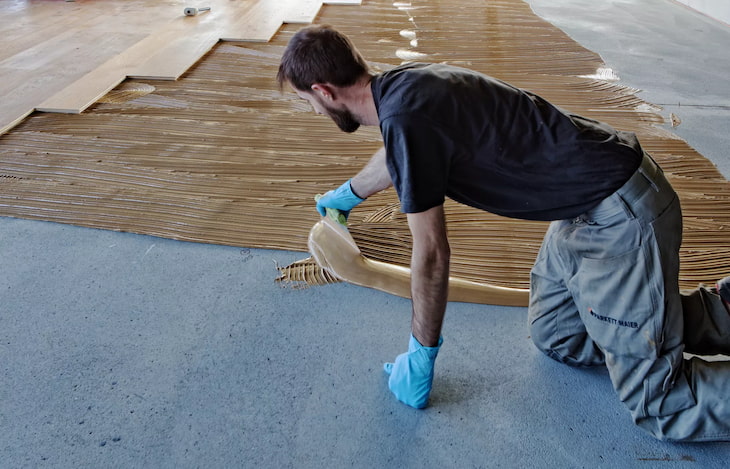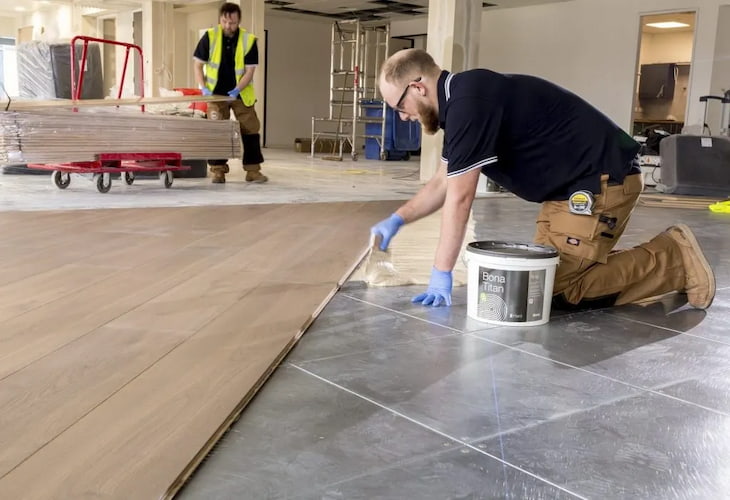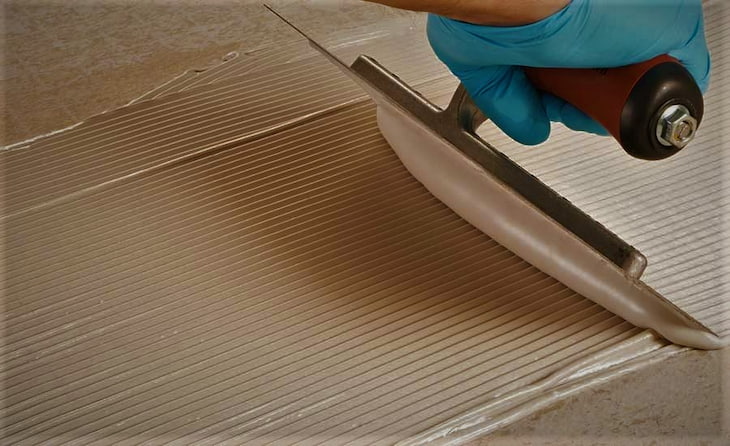25
Jul

Many times, the floor is the first thing you install when you’re building a new house or renovating the current one. This is the right thing to do. The floor is the base of the room and the thing that keeps it together.
It can have a great influence on the overall interior design and the room’s comfort. This is a big investment that should last for at least the next 20 years. So, choosing the right materials to do it is very important. You’ll need the right adhesives to give it firmness and bind it, plus you’ll need a good coating for longevity.
This type of adhesives is perfect if you love wooden flooring and want to install them in your home. These poly-based adhesives work perfectly with any type of wood and won’t let you down. They create a firm and durable bond between the subfloor and the fibres of the wood. Their best feature is probably their flexibility. They’ll move as the floor does over time.
Don’t rush things, take your time and look for the best fast-setting adhesive for flooring you can find. It needs to have improved strength and great coverage. These poly-based adhesives are perfect for homes and rooms that have high moisture levels and mould because they’re moisture-proof. Because of the solvents inside, they can successfully bind to the finish you add to the wooden floor.
To make this bond happen, make sure you clean and sand any imperfections you’ll see on the surface of the wood, and proceed with the installation. It also can dampen the sound which is perfect for soundproofing the space. All things considered, this is a great choice for your wooden floors to last for a very long time.

Acrylic adhesives are the right choice if you’re working with vinyl, stone, or tile. They’re made of resin and have a strong resistance to intense sunlight and temperature fluctuations. They are, however, more susceptible to water and water vapour dilution than other adhesives.
These adhesives work well with engineered wood floors because they can rebind. They contain solvents in them and have low levels of VOC (volatile organic compounds). So, if vinyl flooring or engineered wood is your flooring choice, acrylic adhesives are the most effective and durable option.
If you’re trying to be eco-friendly and care for the environment, water-based adhesives are made for you. This is because of the low VOC levels. They’re also fast-drying so you don’t have to wait for a long time to continue with your project. If you’re a beginner doing your own floors, this is a good way to start.
Besides being simple and safe to use, these adhesives are also easy to clean after the job is done. Considering they’re water-based, their only drawback is moisture damage. Don’t place them in rooms with high moisture levels such as bathrooms, kitchens, laundry rooms or basements. Otherwise, the adhesiveness will start weakening and you’ll need to replace the flooring.
The first consideration for your adhesive for flooring is its drying time. It helps you estimate the time you need to finish the project and when it will be ready to use. It’ll also determine the working speed you’ll need to handle in order to do the job properly and not have wobbly floors afterwards. Plus, you’ll be able to decide how much adhesive you’ll need.

Make sure you do some research about the drying time because different manufacturers have different drying time frames for their products. Keep in mind the room’s temperature and moisture levels because they can also influence the drying time. If you’re working in a humid room or in higher temperatures, the drying process will take longer than usual.
The sort of adhesive you decide to use will also depend on where the flooring will go. The inside of your home will never get in touch with the outside elements such as rain, snow or direct exposure to sunlight, but an outdoor installation is much different.
The flooring and the adhesive will get in contact with the elements. So, when you’re choosing the adhesive, make sure it can handle all of the temperature changes, water, winds and wear and tear. If you’re not sure what to buy, you can always ask the supplier and they’ll give you all the answers.
The next consideration is the material the subfloor is made of. Give this a thought and do your research because not every flooring adhesive bonds with every subfloor. Some of them are specifically made for wooden floors, some can work with cement, stone, or vinyl, and some can work on multiple surfaces.
You’ll know what’s the adhesive’s consistency by the way it loads on a trowel. If it loads easily, it’s consistent and vice versa. This also applies to how easily you can apply it, and how well it will bond and spread across the surface. These things are important especially if you’re a beginner. If this is the case, choose something in-between. Nothing too thick or too thin. Otherwise, it’ll be hard for you to work and do a good job.

Removing and cleaning the adhesive after the job is done can be a hard and challenging task. This is not some stain you can just wipe down with a damp towel or a mop. Ask the retailer about the cleaning time of the adhesive, and if you’ll need special tools or chemicals to do it. Always choose the ones that are easy to clean, such as water-based ones. They’re much simpler to handle than poly-based ones. This is a result of their vulnerability to moisture and humidity.
Several adhesives include dangerous ingredients that could lower the quality of the air in your home. It’s important to pick glues with low levels of VOCs. This way the air inside the house will remain as clean as possible. If you can, avoid using high VOC types of adhesives in small rooms and rooms with no ventilation.
Of course, always wear a mask and gloves for protection. Take the kids or pets out of the house during the application time because they can be pretty sensitive to harmful VOCs. Many manufacturers are trying to lower the toxic chemicals in adhesives, and many of them are successful.